#metal detectorist
Explore tagged Tumblr posts
Photo





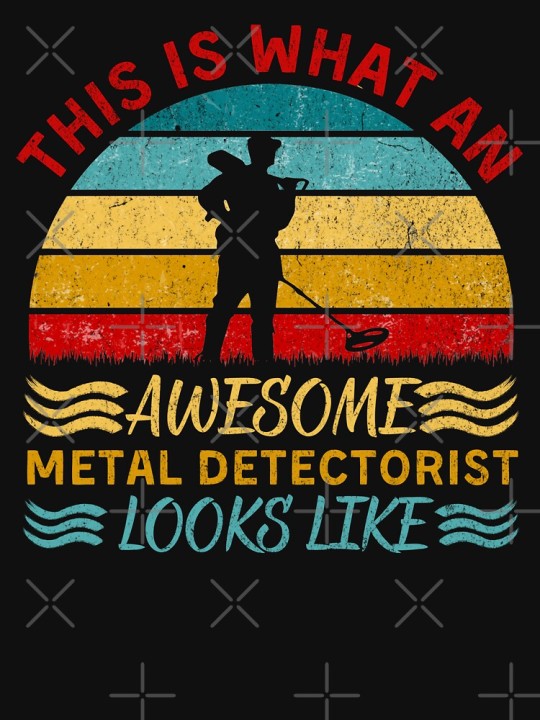




(via "This Is What An Awesome Metal Detectorist Looks Like" Classic T-Shirt for Sale by Affyboss6)
#findyourthing#redbubble#metal detectorist#treasure hunter#metal detector#dirt shark#awesome#this is what#archeologist#treasure seeker
4 notes
·
View notes
Text

Metal Detectorist Finds Rare 2,000-Year-Old Celtic Coin
A metal detectorist says he did a “jig of joy” after turning up an “exceptionally rare” 2,000-year-old Celtic coin worth thousands of pounds.
Grandfather Mike Taylor couldn’t contain his excitement after finding the rose gold stater while searching farmland in Bishton, near Gwent, South Wales.
fter getting an “iffy” signal from his detector, he dug down four inches before uncovering the coin, struck during the reign of Antedios, an Iceni ruler, from 20-47AD.
The incredibly detailed coin, thought to be worth £4,000, depicts a triple-tailed horse alongside a cross, crescent, six-spoked wheel and pellets.
It bears the tree emblem of the Dobunni, an Iron Age tribe living in Britain prior to the Roman conquest.
The name of Antedios is inscribed in full with a Greek letter, which is unusual as abbreviations were more common.
A Timeline Auctions spokesman said: “This variant is rare because it features the complete name of the ruler, unlike most coins where part of the name is missing.
“Additionally, the ruler’s name is inscribed with the Greek letter Θ, whereas it is usually written with the letter ‘D’. It is a well-centred example with sharp details.
“Only one other example with this lettering is recorded, and our example also includes three extra pellets behind the tail. This makes it an exceptionally rare and beautiful coin in lustrous rose gold.”
Antedios remained neutral during the Roman invasion of 43AD and was made a client of Rome.

#Metal Detectorist Unearths Rare 2000-Year-Old Celtic Coin#Bishton South Wales#Iceni tribe#reign of Antedios#Iron Age triple#coin#celtic coin#collectable coins#ancient coins#ancient artifacts#metal detector#metal detecting finds#archeology#archeolgst#history#history news#ancient history#ancient culture#ancient civilizations#roman history#roman empire
58 notes
·
View notes
Note
Re: the archeology nemesis post, why metal detectors? Do they not work good or is it something else?(I've never used one)
Not so much metal detectors as the people who use them. This post I wrote a while ago sort of explains why.
-Reid
27 notes
·
View notes
Photo
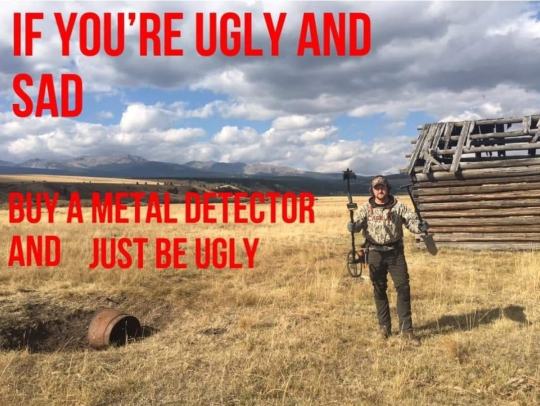
My local metal detectorists guild has the funniest memes I’ve ever seen, further proving my belief that detectorists are one of the best genres of people.
Anyways watch Detectorists, it’s on Prime and it’s one of my favorite shows.
121 notes
·
View notes
Text
Maybe I have something in common with antis
I'm reading a book where someone picks all the shells they find on a secluded beach and go especially for the rarest ones
And I feel I am being overcome with a murderous intent
This is forbidden !!! Stop doing that, character in a book that has no real existence !!! Some people might be influenced by the glee you express at picking up endangered species !
I do hope the very righteous main character comes and scolds them immediately
This is the first pages of a crime story so I am very certain they will be punished by death for their foolishness anyway.
(my anxiety asks me to tell you this is a joke. Okay. I have nothing in common with antis. But if you pick up endangered species wherever I will find you and I will kill you)
#you want worse start talking to me about detecting metal#i will be at your throat immediately#fine with murder but I draw the line at metal detectorists in historical sites and randos picking up endangered species#in this case i am the one comitting the murder
9 notes
·
View notes
Text
Uncovering the Chew Valley Hoard: A Significant Discovery in English History
Uncovering the Chew Valley Hoard: A Treasure of Historical Significance The South West Heritage Trust has successfully secured an extraordinary hoard of coins, marking a significant moment in the preservation of England’s rich history. Discovered by a group of dedicated metal detectorists, the treasure will be shared between the finders and the landowner. This remarkable collection, known as the…
#archaeological find#British Museum#Chew Valley Hoard#England coins#historical significance#metal detectorists#Norman Conquest#South West Heritage Trust#treasure#Treasure Act 1996
1 note
·
View note
Text
I bore you about the aurora borealis and also bang on about other things …
Woah there, another massively busy week. We hit the ground running (from both ends) with a lovely bout of the Noro on Sunday night. I was fine by the end of Monday but it was still a right pain in the jacksy. Tuesday I kept things very low key because I was still feeling a bit delicate so I did a bit of admin though in that I wrote three reviews, which I’ve been meaning to write for ages. There…
#aurora borealis#author blog#detecting finds#detectorist#M T M Makes a complete tit of herself#M T McGuire#M T McGuire new releases#metal detecting#off topic
1 note
·
View note
Text


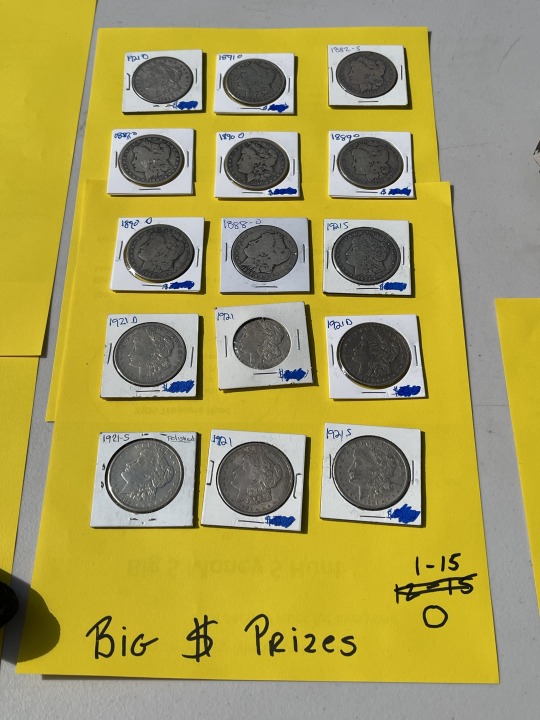
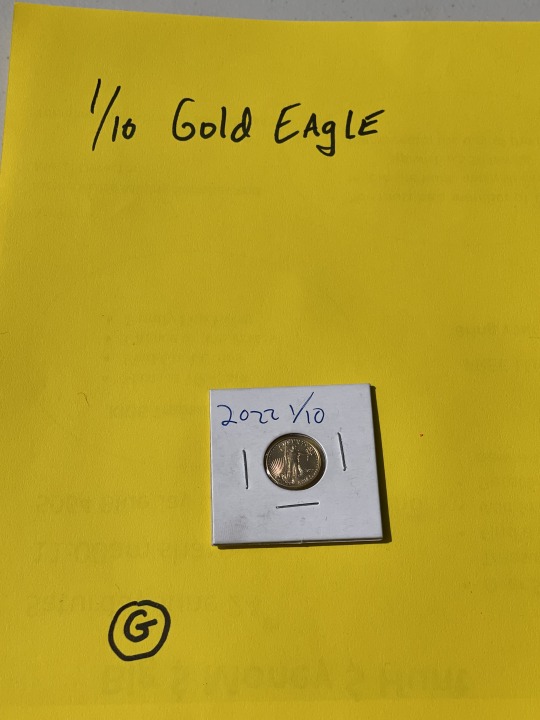

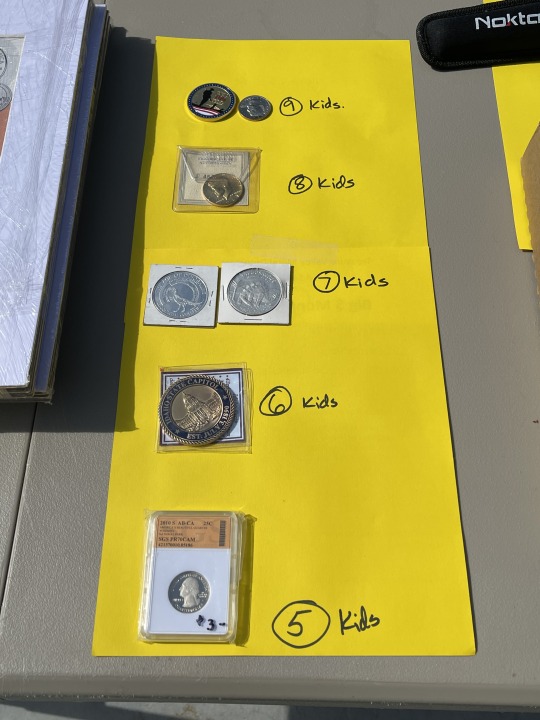
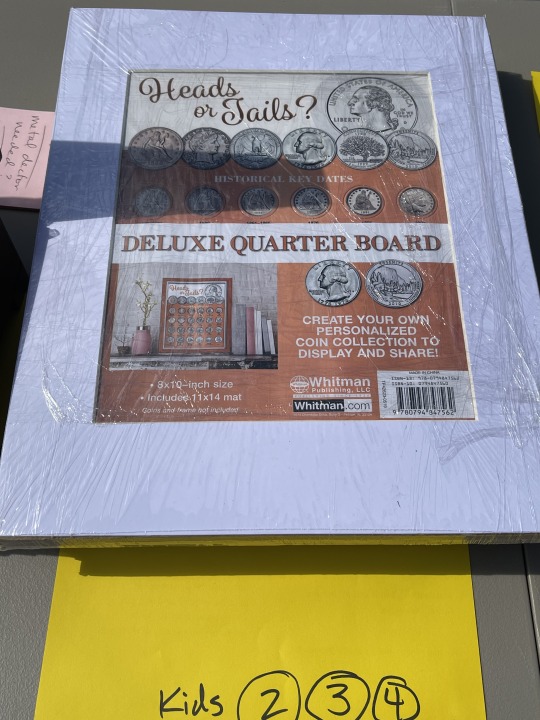

June 2023 TVMDC BIG Money Seeded Hunt
#detectorist#metaldetectingidaho#metaldetector#metaldetectorfun#metaldetectoring#metaldetectorists#metaldetectors#metal detecting
1 note
·
View note
Text
Roman-era silver 'toilet spoon' discovered in Wales

A Roman-era silver "toilet spoon" discovered by a metal detectorist in the U.K. has been declared a "treasure" by experts.
Valentinas Avdejevas made the peculiar finding in 2020 while exploring Vale of Glamorgan, a county in Wales. He surrendered the metal artifact to the Portable Antiquities Scheme for Wales, a local authority that works directly with metal detectorists who have unearthed artifacts. The utensil is currently in the possession of Amgueddfa Cymru – Museum Wales, according to a statement.
The narrow silver spoon (also known as a Roman ligula) contains a shallow, circular bowl attached to a thin, bent handle and would have been used to scoop out cosmetics and perfume from long-necked bottles. Read more.
3K notes
·
View notes
Text

Posy ring, late Medieval period (15th century?), engraved with foliage and the motto "Je desir vous Ceruir" ("Jé désire vous servir" / "I desire to serve you")
Discovered by a metal detectorist in Essex, 2023
Colchester and Ipswich Museum Service / BBC
942 notes
·
View notes
Text

A Rare 2,000-Year-Old Roman Pan Found by Metal Detectorist Goes on Display
A rare and almost complete early Roman copper-alloy pan discovered near Bury St Edmunds is now on public display.
The 2,000-year-old pan, which likely dates from the first century to the first half of second century AD, and may have been used for heating wine, is on display at West Stow Anglo-Saxon Village.
The pan was discovered buried in a small pit cut into a Roman ditch, perhaps as an offering. It is 30cm in length and 8.6cm deep, similar in size to a modern day 16cm saucepan.
It was discovered earlier this year by metal detectorist Tom Hyett. Realising he had found something remarkable, he contacted Suffolk County Council Archaeological Service (SCCAS).
A team from SCCAS was able to excavate the pan and record the archaeological context, before it was taken to the laboratory at Norfolk Museum Service Conservators, where the soil was removed and the pan conserved ready for display.

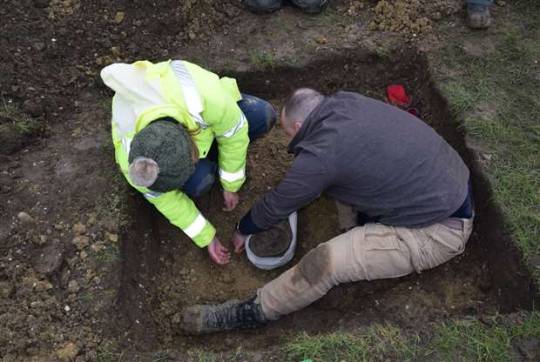
Cllr Philip Faircloth-Mutton, Suffolk County Council cabinet member forenvironment, communities and equality, said: “I’d like to thank Tom for quickly recognising the significance of his discovery and getting in touch with SCCAS so our team could excavate the pan, record it and help to preserve it.
“If the object isn’t classed a treasure, we will borrow it to create a detailed record and then return it to the finder. In the case of this Roman pan, the landowner and Tom kindly donated it to the museum.”

The pan is missing the middle section of the entire circumference of the bowl, due to corrosion and old breaks. It therefore now survives in three sections, the handle and rim, the remaining bowl wall and the base.
A maker’s mark is stamped onto the handle, though no parallel mark has been found. It appears that, apart from two South Italian families, the Cipii and the Ansii, which occur more frequently, most of the stamps on such pans are single examples, including those on other pans found in Brandon and Herringfleet, in Suffolk.
The pans were made in Campania, Southern Italy, and also in Gaul and are widely distributed across Europe. They may have been used for heating wine.
By Camille Berriman.
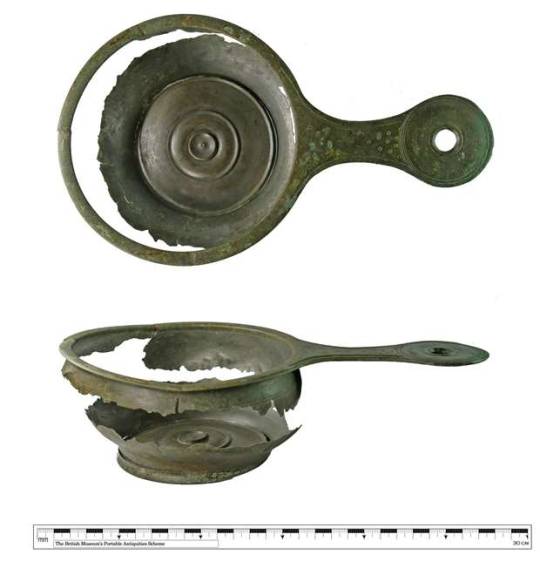
#A Rare 2000-Year-Old Roman Pan Found by Metal Detectorist Goes on Display#St Edmunds#metal detector#metal detecting finds#ancient artifacts#archeology#archeolgst#history#history news#ancient history#ancient culture#ancient civilizations#roman history#roman empire
41 notes
·
View notes
Photo






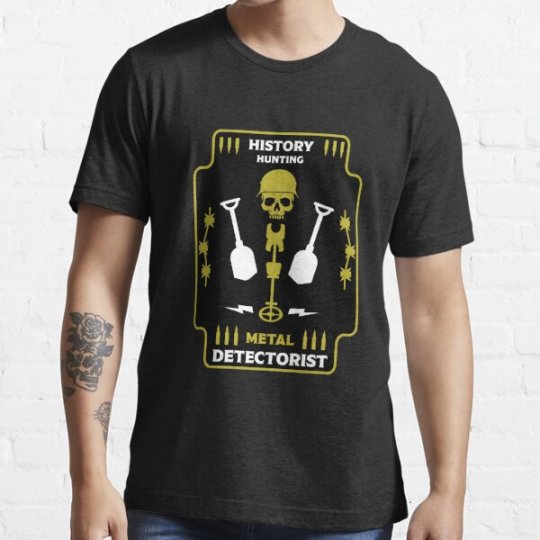
(via WW2 Metal Detectorists - Metal Detecting - Battle Field Hunters - History Treasure Essential T-Shirt by bestawesome)
0 notes
Photo

Found again: BBC's The Detectorists The BBC series The Detectorists has released a special single episode/movie in December 2022, now streaming on Acorn. Mackenzie Crook (Pirates of the Caribbean) and Toby Jones (The Hunger Games) return as a pair of metal detecting chums as they search the British countryside for historic treasures. — Read the rest https://boingboing.net/2023/01/16/found-again-bbcs-the-detectorists.html
1 note
·
View note
Text
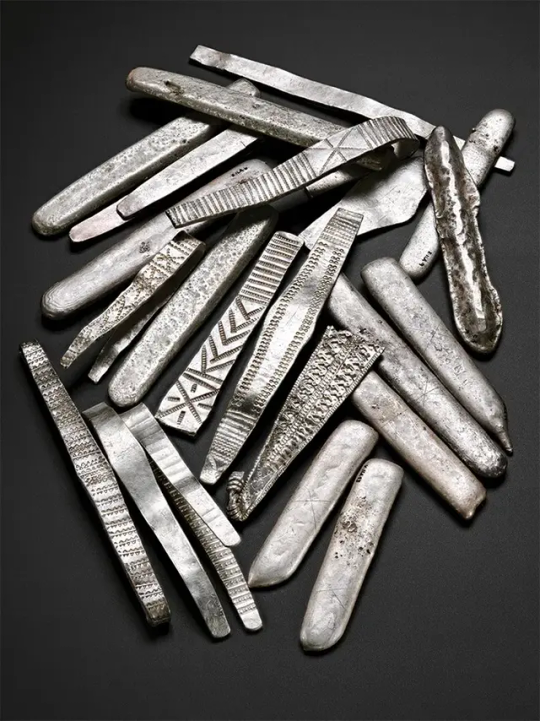


The Galloway hoard, a Viking age treasure hoard consisting of silver ingots, hack silver, silver jewelry, and some gold pieces. Uncovered near Balmaghie, Scotland by a metal detectorist in 2014. Dates to around 900 AD. Currently housed at the National Museum of Scotland.
2K notes
·
View notes
Text
been having really autistic thoughts about ghost lately and i have some extremely niche headcannons:
♡ he’s one of those people that leaks military vehicle blueprints and manuals to win petty arguments on war thunder forums. how fucking dare this civilian say he doesn’t know his shit! he’s been inside Challenger 2 for the past 2 weeks! better leak the AESP (army equipment support publication) to win this internet squabble. gotta put TankWaifuwu83 in his goddamn place, and fast.
♡ he tries, and most of the time fail, to limit his in-game spending to £100 a month.
♡ has unpainted warhammer figures in his flat, theyre gifts from gromsko (the man caught ghost staring when he was yapping about warhammer and the polish dude thought ghost was curious. he wasnt. he was just dissociating in gromsko’s general direction)
♡ collects stamps because his mum used to—mans would grab them off bins if he spots any—and brings them when he comes visit, showing her new ones and would tell stories of where/how he found it.
♡ a metal detectorist in his *cough* limited *cough* free time, and can identify bullet casings and musket balls (minié balls) by type and approximate year of manufacture. he collects those in a jar by the front door because it’s the easiest place to put them and he counts that jar as decoration for his flat. (he hides those when you come by at first, not wanting to look more like a weirdo than he already does)
55 notes
·
View notes
Photo

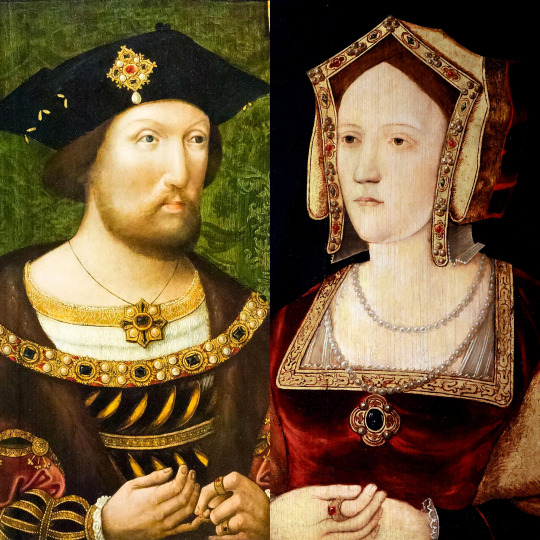

‘It's not every day that new Tudor artifacts are discovered. Earlier this morning, researchers at the British Museum announced the discovery of a heart-shaped gold pendant, attached to a gold chain, dated to around 1521. Perhaps the most significant part of this discovery is the interwoven 'H' and 'K' initials, confidently linking this find back to Henry VIII and his first wife, Katherine of Aragon. It is possible that this pendant was part of the Tudor court's famed pageantry. It may have been presented to Queen Katherine by Henry himself at a jousting tourney at Westminster, intended to celebrate the birth of their son, Prince Henry, Duke of Cornwall. However, that would place the pendant's origins to January of 1511 at the latest. At the tournament, King Henry proudly wore symbols of the heart, Katherine's initials, and Katherine's emblem – a pomegranate – woven throughout his clothes and resplendent caparisons. He spared no expense for the celebrations, although sadly, his son Henry, would breathe his last less than a month later. Little of the object's provenance has been revealed. It was discovered by a metal detectorist in a field in the Midlands, who 'shrieked like a school girl' upon unearthing the pendant. Hopefully in the coming months, more information about this enigmatic object will be released.’
Source: TudorExtra on Instagram
#tudor history#Tudor Dynasty#the tudors#katherine of aragon#catherine of aragon#henry viii#renaissance#early modern#archeaology
1K notes
·
View notes